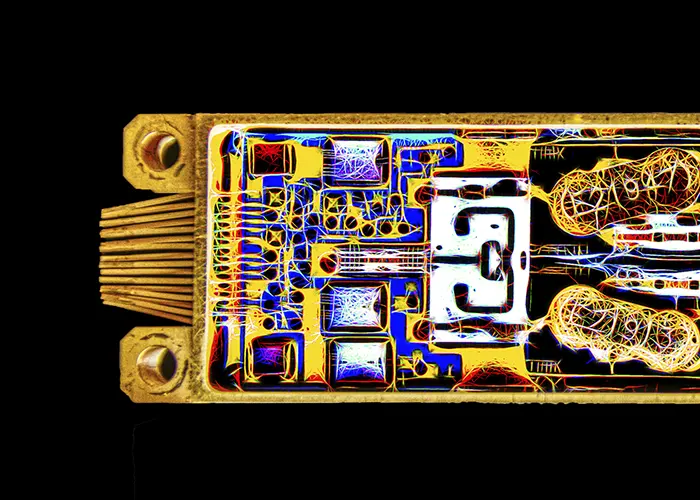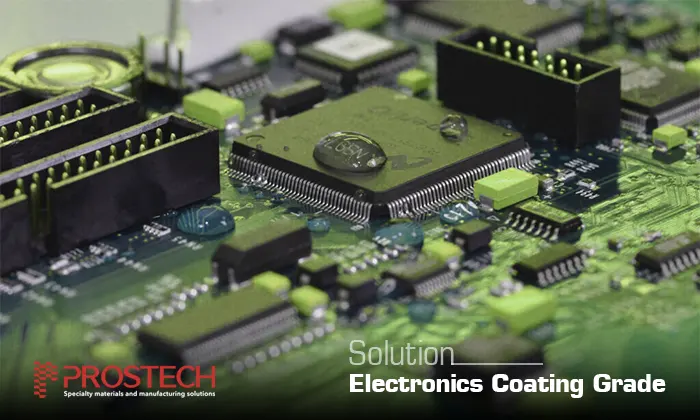Curing Mechanism - How do Conformal Coating Layers cure?
Conformal coatings can also be categorized by cure mechanism. Some mechanisms are relatively foolproof, while others are very complex and leave room for application errors when used in an uncontrolled process.
- Evaporative Curing Mechanism – The liquid carrier evaporates, leaving just the coating resin. Although very simple in theory, circuit boards usually need to be dipped at least two times to build up an adequate coating on the edges of their components. Whether the liquid carrier is solvent or water‐based, humidity affects application parameters. Solvent systems tend to be easy to process, and provide consistent coverage due to good wetting, and fast cure times. However, solvents are often flammable, so adequate ventilation and fume extraction methods are required. Using water as a carrier can eliminate the flammability concern, although these coatings tend to take much longer to cure, and can be very sensitive to ambient humidity.
- Moisture Curing – Primarily found in silicone and some urethane systems. These materials will react with ambient moisture to form the polymer coating. This type of curing mechanism is often coupled with evaporative curing. As carrier solvents evaporate, moisture reacts with resin to initiate final curing.
- UV Curing – Coatings that are cured using ultraviolet light offer very fast throughputs. They are 100% solid systems with no carrier solvents. UV curing occurs in the production line, so a secondary curing mechanism is needed under the components and in shadowy areas. UV cured coatings are more difficult to repair and rework and require UV curing equipment and UV radiation protection for workers.
- Heat Curing – Heat curing mechanisms can be used with one or multicomponent systems, as a secondary curing mechanism for UV curing, moisture curing, or evaporative curing. The addition of heat will cause the system to polymerize or speed the curing of the system. This can be advantageous when one curing mechanism is insufficient to gain the curing properties required or expected. However, the thermal sensitivity of circuit boards and components must be taken into consideration when curing at high temperatures.
How to remove a Conformal Coating layer?
Conformal coatings can also be categorized by cure mechanism. Some mechanisms are relatively foolproof, while others are very complex and leave room for application errors when used in an uncontrolled process.
On occasion, it is necessary to remove a conformal coating from the circuit board to replace damaged components or perform other reworking procedures. The methods and materials used to remove coatings are determined by both the coating resins, solder masks, components and the size of the area, which can impact the time required for removal. The basic methods are:
- Solvent Removal – Most conformal coatings are susceptible to solvent removal; however, it must be determined if the solvent will damage parts or components on the circuit board. Acrylics are the most sensitive to solvents hence their easy removal. On the other hand, epoxies, urethanes, and silicones are the least sensitive. Parylene cannot be removed with a solvent.
- Peeling – Some conformal coatings can be peeled from the circuit board. This is mainly a characteristic of some silicone conformal coatings and some flexible conformal coatings.
- Thermal/Burn‐through – A common technique of coating removal is to simply burn through the coating with a soldering iron as the board is reworked. This method works well with most forms of conformal coatings.
- Microblasting – Microblasting removes the conformal coating by using a concentrated mix of soft abrasive and compressed air to abrade the coating. The process can be used to remove small areas of the conformal coating. It is most commonly used when removing Parylene and epoxy coatings.
- Grinding/Scraping – In this method, the conformal coating is removed by abrading the circuit board. This method is more effective with harder conformal coatings, such as parylene, epoxy and polyurethane. is only used as a method of last resort, as serious damage can be incurred.
Contact us for more consultant from experts in the Conformal Coating field:
Email: gluexpert@prostech.ph
Hotline: (+84) 984 695 398






